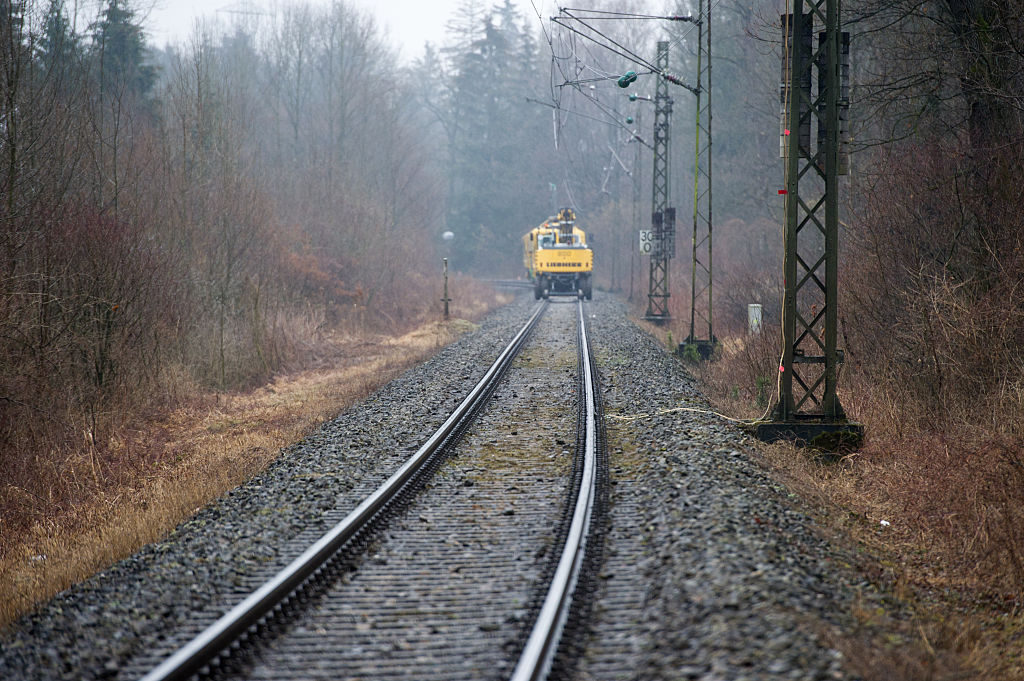China to Launch First Driverless Subway Line in 2017
| Charissa Echavez | | Aug 30, 2016 08:07 AM EDT |
(Photo : Getty Images) A high-speed ICE train of German state rail carrier Deutsche Bahn travels on the newly-completed stretch between Erfurt and Leipzig near Erfurt, Germany.
China has unveiled plan to launch the first driverless subway line, the Yanfang line, in southwest Beijing by the end of 2017, authorities revealed on Monday.
According to FirstPost, the new railway, which will utilize domestic technology, would be fully automated including train departures, door functions, and cleaning.
Like Us on Facebook
China has already mastered the core technologies of fully automated subway systems since the country started developing them in 2010, Global Times reported.
So far, Beijing subway lines 3, 12, 17, and 19, as well as, the new airport line are set to be made automated, driverless subway lines.
The People's Daily reported that the total length of Beijing's fully automated subway lines is anticipated to span as much as 300 kilometers by 2020.
The initiative to use local technology is part of the country's "Made in China 2025" plan that targets to upgrade China's industry, strengthen its presence in the global rail transport sector, and ensure the security of China's infrastructures.
Meanwhile, China's very first permanent subway train started its operation in Central China's Hunan province, China Daily reported. The line aims to save up to 30 percent energy compared with the conventional lines.
The railway, which was jointly developed by Changsha Metro Group, CRRC Zhuzhou Locomotive Co Ltd., and Zhuzhou CRRC Times Electric Co Ltd., features a permanent magnet tractor system that has higher power density and is more power efficient.
If such a system is used in all of the subways in Changsha, it could up to 5.5 million yuan ($830,000) of power cost annually.
Tagssubway line, driverless train, train, railway network, automated train
©2015 Chinatopix All rights reserved. Do not reproduce without permission
EDITOR'S PICKS
-

Did the Trump administration just announce plans for a trade war with ‘hostile’ China and Russia?
-

US Senate passes Taiwan travel bill slammed by China
-

As Yan Sihong’s family grieves, here are other Chinese students who went missing abroad. Some have never been found
-

Beijing blasts Western critics who ‘smear China’ with the term sharp power
-

China Envoy Seeks to Defuse Tensions With U.S. as a Trade War Brews
-

Singapore's Deputy PM Provides Bitcoin Vote of Confidence Amid China's Blanket Bans
-

China warns investors over risks in overseas virtual currency trading
-

Chinese government most trustworthy: survey
-

Kashima Antlers On Course For Back-To-Back Titles
MOST POPULAR
LATEST NEWS
Zhou Yongkang: China's Former Security Chief Sentenced to Life in Prison

China's former Chief of the Ministry of Public Security, Zhou Yongkang, has been given a life sentence after he was found guilty of abusing his office, bribery and deliberately ... Full Article
TRENDING STORY

China Pork Prices Expected to Stabilize As The Supplies Recover

Elephone P9000 Smartphone is now on Sale on Amazon India

There's a Big Chance Cliffhangers Won't Still Be Resolved When Grey's Anatomy Season 13 Returns

Supreme Court Ruled on Samsung vs Apple Dispute for Patent Infringement

Microsoft Surface Pro 5 Rumors and Release Date: What is the Latest?












